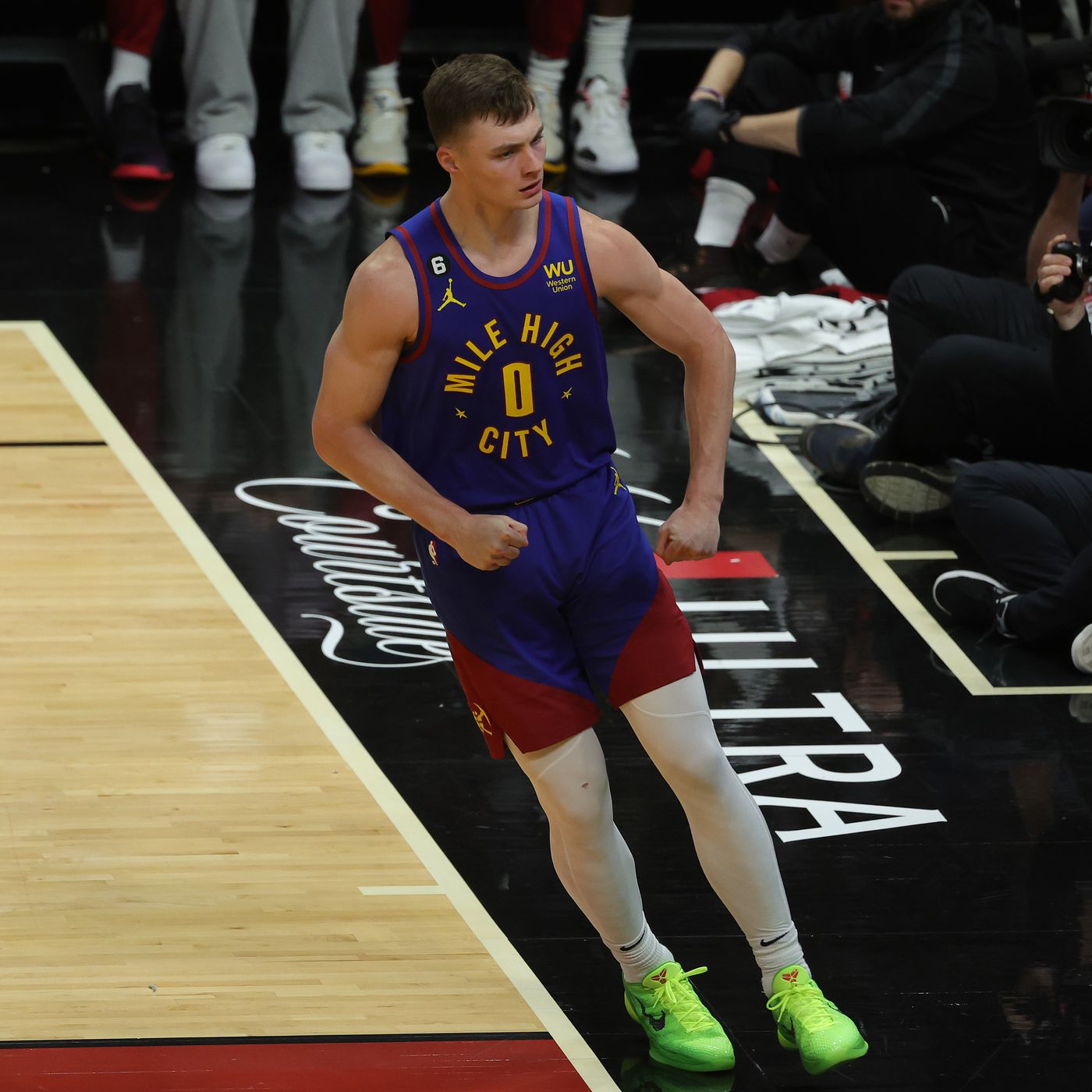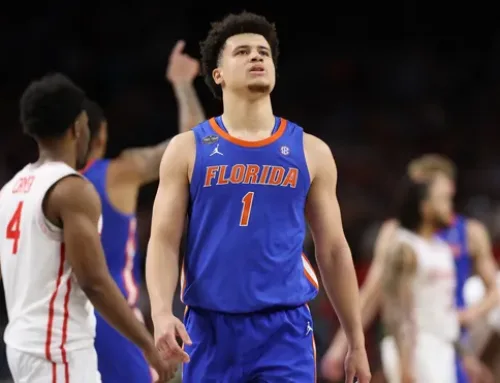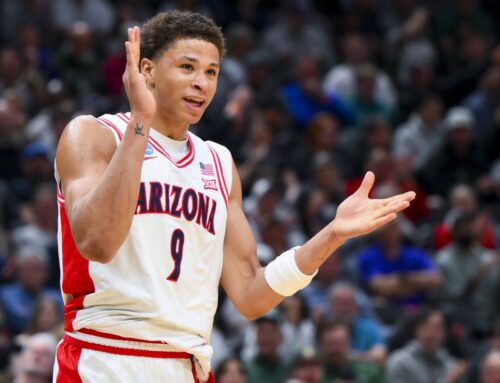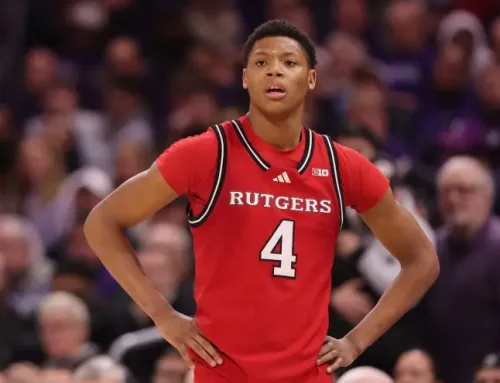By Avi Tyagi
My 2023 Draft Big Board is my second attempt at creating a Top-20 prospects list for an incoming draft class. On the whole, I feel enthused about the process used to construct last season’s board but I do think there were a couple of instructive mistakes to reflect upon. There are two separate types of errors: evaluation mistakes and process mistakes. In particular, there were two process mistakes that I wanted to focus on. Put simply, Christian Braun and Andrew Nembhard were on the outskirts of making my top 20 last year and both should’ve been in.
Andrew Nembhard is what I thought Dalen Terry could be when I featured Terry at 17 on my original list. I understated Nembhard’s on-ball defense, passing and ability as a shot-maker and overlooked him in favor of Terry’s athleticism, precocious help-side defense and active hands in the passing lanes. To Terry’s credit, he performed reasonably well in his rookie season; he’s simply still very raw and not yet an NBA-caliber offensive player. On the other hand, Gonzaga’s 4-year point guard quickly took the reins of the Pacers’ second unit and was a key contributor for the big club in year 1. The irony: Nembhard was not on my list because I thought he was a man without a country. I wasn’t sure what attribute would earn him minutes at the NBA level and was concerned his rim pressure and shooting would not be up to par. In doing so, I also didn’t fully consider the importance of Nembhard’s combine performance, where he stood out among his peers for his ability to run the offense on ball and his comfort playing off ball. Nor did I fully weight Nembhard’s abilities to shift on or off-ball at Gonzaga depending on the surrounding talent, all while being a solid connective passer. In the end, Nembhard’s feisty on-ball defense and 1-through-3 switch-ability were the defining factors that helped him plant his foot in the door and on the court. He’s already one of the better backup point guards in the league and might eventually develop into a fringe starter due to his defense and ability to play off a primary creator.
Christian Braun was the first name off my list last season. Once again, I was concerned that a specific prospect might be a man without a country. I knew Braun could shoot. I knew he was athletic. I knew he could attack closeouts. I knew he could defend. At the NBA level, I just didn’t know what he did well enough to differentiate himself. Would he even earn closeouts at the NBA level? He could shoot, but would he shoot decisively enough over soft closeouts to warrant a different style of coverage? He played like a wing while built like a guard. Would the on-ball defense be sufficient to earn minutes? I didn’t envision Braun as an NBA ball handler. If the defense was merely adequate, what would earn him a role on the court? On the other hand, while I had questions about Branham’s defense and his ability to be an efficient shot creator outside of the midrange, I over-indexed on his shooting capability. In no way do I mean to disregard Branham; the main point here focuses on the difference in my perception of Branham versus Braun. I viewed Braun as a more difficult role fit because Branham’s abilities on-ball were easier to imagine in a projection and because I had a tougher time gauging how Braun’s defensive ability would scale up to the pro level. Irrespective of that point, Braun’s versatile skill set actually should have made him easier to project at the NBA level, because he had a larger set of bankable skills to lean on as he develops. While Braun may have landed on the perfect team to take advantage of his defensive screen navigation and abilities as an athletic cutter, even working with the information present pre-draft, I think Braun’s defense and ability to take little off the table as a role player should have projected to earn a bench role in the NBA. After re-examining my process and all the data points available to me pre-draft, much as I should have placed Nembhard at 17, Braun should have subbed in at 19 on my board.
That leads me to the 2023 NBA big board. Having witnessed two fringe top-20 candidates on my original list clearly overcome my perceptions about role and fit and showcase the value of skill set versatility, I kept a list of the fringe top-20 candidates whom I had the toughest time omitting. Much like their predecessors, the main reason they didn’t make my list was because of hesitancy about role fit at the NBA level. On top of that, the supreme depth of talent in the 2023 class meant that some prospects that may have featured in a top-20 in other draft classes would be left off this time. In order, those 3 were Jaime Jaquez Jr., Keyonte George, and Trayce Jackson-Davis. It’s only been one Summer League so far and yet this trio has performed so well as a whole that I feel obliged to discuss them in detail. I will go over why I left them off and what they’ve since shown me in a few Summer League outings.
Jaime Jaquez Jr. Pros: he can shoot, he can pass, he can self-create. He’s a good team defender.
My main concerns for Jaime: his lack of scoring efficiency as a creator and his foot speed as a perimeter defender
Central reason I left him out: Would he be able to earn a potential 3+D role if his foot speed and on-ball defensive value were limited?
Keyonte George Pros: high volume pull-up three-point launcher with a large percentage of shots being self-created attempts, defensive potential, some passing ability that would be accentuated as a secondary guard playmaker
Main concerns: interior scoring, does not yet project to be a marksman from distance, defensive inconsistency, turnover prone when pressed
Central reason I left him out: If he defends like a 1, but plays offense like a 2 and doesn’t make enough jumpers or generate a high volume of rim attempts, what’s his role?
Trayce Jackson-Davis Pros: upside as shot blocker with potential to be small ball rim deterrent, ability to switch out to the perimeter at times, athleticism, well-developed passing ability in the short roll, some craft as a scorer near the hoop
Main Concerns: lack of ambidexterity as a finisher, lack of size and strength at center, not currently a projectable shooter
Central reason I left him out: Can you be a starting center without shooting or ambidexterity as a finisher and with a slight frame? How much can TJD add to his frame? As a career 68% free throw shooter with relatively stiff and inconsistent mechanics, can his shooting develop? What’s the value proposition for a backup center?
So far, these prospects have already answered some of my questions, albeit in small sample sizes.
Thus far, the standout amongst this group has been Keyonte George. Keyonte just cooked in Summer League. Unlike most rookie guards with only 1-2 years of college experience, Keyonte was able to get to his spots at will. The bursts of acceleration and deceleration generated plenty of space for his pullups and the elevation on his jumpers made his mid-rangers that much harder to contest. Most impressively, he was able to score at will even when pressed up upon by the best opposing defenders. At the NBA’s introductory event, he limited turnovers while actually increasing his playmaking usage and the upside of his shooting generated true star-level Summer League performances. This is the George whom I had ranked 4th overall in my early preseason rankings. I look forward to seeing him take further steps as a driver and defender over the course of the next few seasons to truly build on his potential as a plus starter.
Jaime Jaquez Jr. was basically shut down after 1 great California Classic performance. Jaime’s lateral agility concerns were not answered but Summer League can also often expose clear weaknesses and that was not the case here either. It’s difficult to say how Jaime’s efficiency would hold up long term, but he comfortably got to the rim and generated free throws against Summer League defenders. At the NBA level, he may just attack more closeouts as a tertiary option on plays and maintain efficiency by getting to the line.
Trayce-Jackson Davis only got to make two summer league appearances due to a hamstring injury. He made them count. There was no better fit for him in the draft than the Warriors. With the Warriors’ free flowing system, Dejan Milojević’s coaching and Kevon Looney’s mentorship, Trayce is set up for success. He’s the perfect complement to Kevon’s ground-bound, methodical style of play. Chris Paul will be an important mentor for Trayce to help adjust to the timing and rhythm of pick and rolls in the league. In Summer League, Trayce was neat and tidy in short roll situations. He was decisive and displayed excellent vision to hit cutters or kick back out when needed. For a center, he also scored very effectively on finishes near the baskets and was a clear positive as a rebounder. A larger sample size will be needed to determine Trayce’s defensive performance, but on the whole, Trayce produced splendidly in his intro to the league.
These are my Braun-Nembhard candidates and the early returns display that the members of this triad have the requisite tools to find roles, to be on par with many of their [pre-draft top 20] peers, and to potentially be some of the best players in this class.
